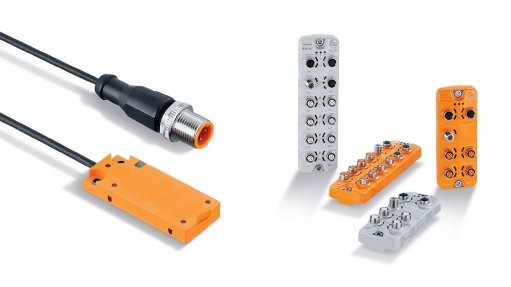
A data memory for IO-Link and link master from ifm electronic
An IO-Link is a communications networking standard mainly used for linking sensors and actuators in industrial automation applications. IO-Link masters are used to connect a number of different IO-Link devices.
The decentralised IO-Link master modules serve as a gateway between intelligent IO-Link sensors and the field bus, sending important information from sensors to the information technology (IT) system. With a separate Internet of Things (IoT) ethernet socket the IT network can be separated from the automation network. Sensor information is transferred into the IT world by means of the established TCP/IP JSON interface.
ifm electronic IO-Link masters offer a range of features, including:
- Industry 4.0 ready thanks to a new IoT core
- Separation between automation and IT network
- 4 or 8 IO-Link ports with full V1.1 functionality
- PROFINET, EtherNet/IP, EtherCat, Modbus TCP, TCP/IP JSON or Powerlink
- Master and device configurable using the LR DEVICE software
Manufactured using special housing materials with high ingress resistance, the link masters can be used in coolant applications or in wet areas in the food industry. The ecolink technology is said to guarantee reliable, ingress resistant M12 connections of the connection cables.
Ifm electronic also supplies mobile data memory for IO-Link. The external IO-Link memory DynamIQ Shared Unit (DSU) is a mobile all-purpose device for local data transmission.
Connected to an IO-Link master, the small device makes the stored data available to all connected receivers. The company’s moneo configure IoT software allows the IO-Link memory to be used to record data of total operating hours, maintenance intervals or system-relevant maximum and minimum values such as pressure, temperature or vibration data. A write protection feature can be used to protect against accidental overwriting of sensitive device information.
The DSU100 is a 128 kB FRAM data carrier which serves as a storage medium in industrial environments. Parameter setting and data exchange take place by means of the integrated IO-Link interface and can be carried out using the moneo configure software while the system is not in operation.
The device supports various operating modes, such as reading the device-specific, globally unique UID, reading and writing up to 28 bytes of data in one IO-Link cycle and reading and writing larger amounts of data, with length restrictions usually only imposed by the programmable logic controller (PLC). Automatic access to the memory stick during operation can be defined using numerous commands that regulate and control the read and write access.